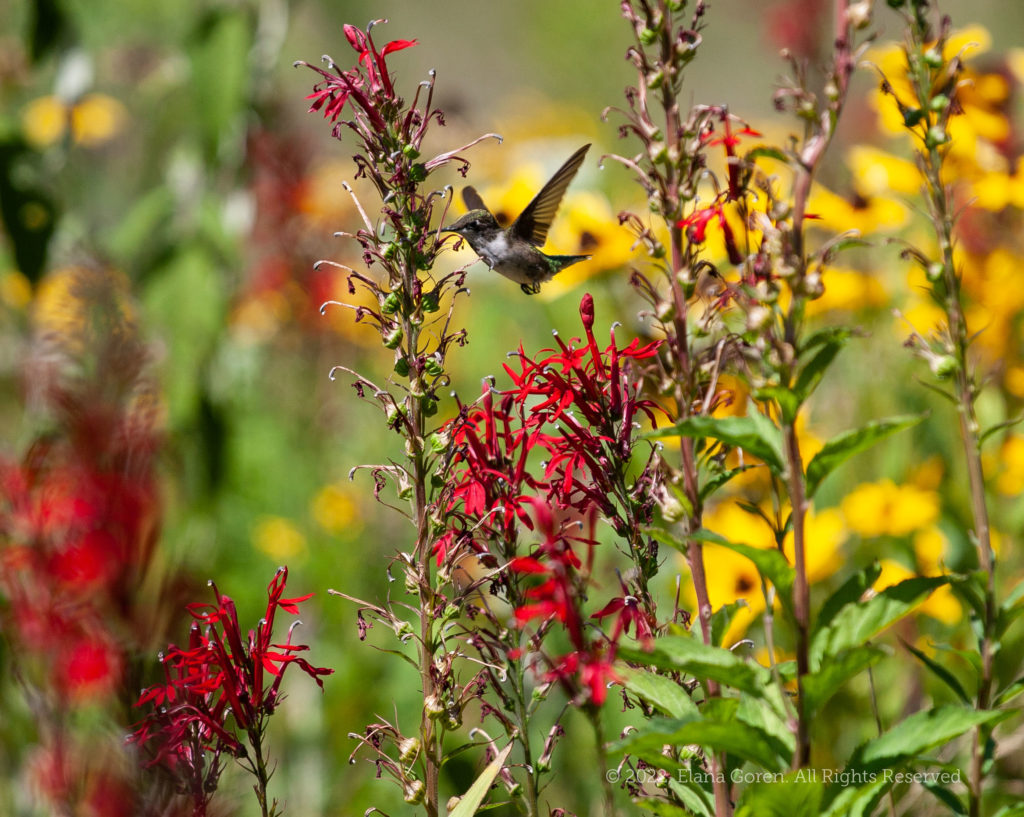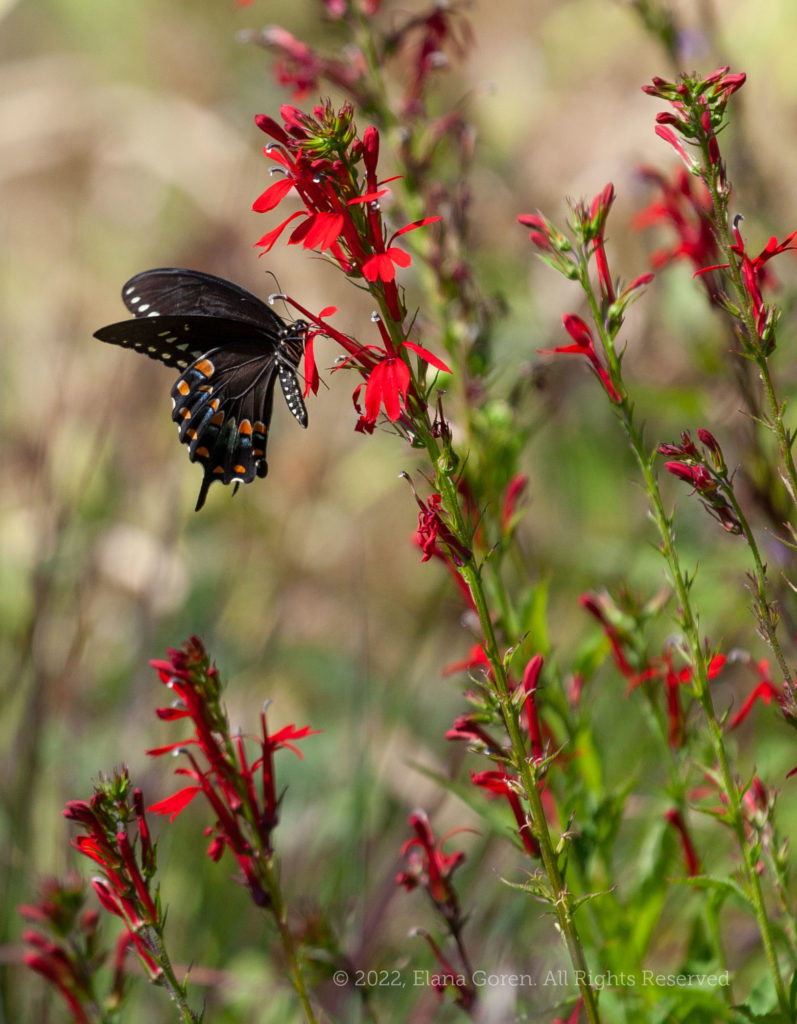August Flora Focus

Photo taken at the end of August 2022, zone 6b. ©2022, Elana Goren.
Cardinal Flower
Lobelia cardinalis
Hummingbirds can’t resist this summer-flowering native perennial. Cardinal Flower’s bright red stalks rise above the native flower garden. These crimson stalks serve as a beacon to all pollinators but especially hummingbirds and butterflies looking for a good nectar source.
I prefer Cardinal Flowers in my garden instead of putting out Hummingbird feeders which can do more harm than good. If the feeders are not cleaned properly, the proper sugar water isn’t supplied and/or the water is not changed regularly, the feeders can make Hummingbirds sick. It’s a high-maintenance way to attract hummingbirds and it doesn’t give them the protein that they require. But, Cardinal Flower has none of those downsides and all the benefits of attracting hummingbirds.
A care-free perennial at home in most natural garden settings, the only maintenance that might be needed is to cut spent flowers to prevent reseeding if that is not desired. These native plants disperse seeds readily and are perfect for wildflower gardens, adding a colorful, low-maintenance perennial to a garden patch made for pollinators.
The general wisdom about this plant is that it prefers moist soil conditions and I have found this to be so. However, this summer, during a terrible drought in the Northeast, I have found that my Cardinal Flowers are doing fine on a slope, in an area that I have not watered all summer. It was planted with other perennials, some of which have differing needs yet all have weathered the drought beautifully.
The Cardinal Flowers live in a stretch of perennials of Black-Eyed Susans (Rudbeckia hirta), Anise Hyssop (Agastache foeniculum), Beebalm (Monarda didyma and Monarda fistulosa), Ox Eye Sunflower (Heliopsis helianthoides var. scabra ‘Burning Hearts’), Mountain Mint (Pycnanthemum muticum) among others, creating a native, natural garden that pollinators come to year after year.

Planting Info
LIGHT full sun to part shade
WATER prefers medium to wet conditions
SOIL adaptable, clay, loam
SOIL PH adaptable
HARDINESS zones 3 – 9
HEIGHT 4 – 5 feet
SPACING 12 – 24 inches
BLOOM TIMES July – September
BLOOM COLOR Red
BENEFITS Perfect for pollinator gardens, native plantings, meadows, rain gardens. Low-maintenance perennial that attracts hummingbirds and other pollinators. Deer and rabbit resistant. Received the Award of Garden Merit from the Royal Horticultural Society.
More Native Plants that Bloom in August
Black-Eyed Susan (Rudbeckia hirta)
Blazing Star (Liatris spicata)
Butterfly Weed (Asclepias tuberosa)
Cardinal Flower (Lobelia cardinalis)
Coneflower (Echinacea purpurea)
Fleabane (Erigeron philadelphicus)
Garden Phlox (Phlox paniculata)
Great Blue Lobelia (Lobelia siphilitica)
Joe Pye Weed (Eutrochium purpureum)
Milkweed (Asclepias syriaca)
Oxeye Sunflower (Heliopsis helianthoides)
Scarlet Beebalm (Monarda didyma)
Smooth Hydrangea (Hydrangea arborescens)
Summersweet (Clethra alnifolia)
Whorled Tickseed (Coreopsis verticillata)

Love the photos! You are truly an amazing photographer as well as an amazing gardener.
I will be sure to plant the “Cardinal plant” next summer so that the hummingbirds will come visit my garden.